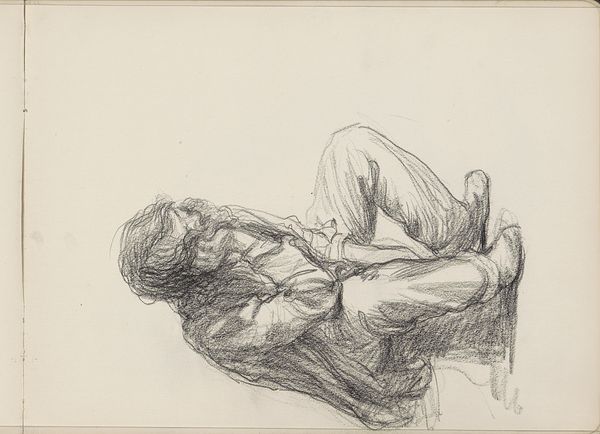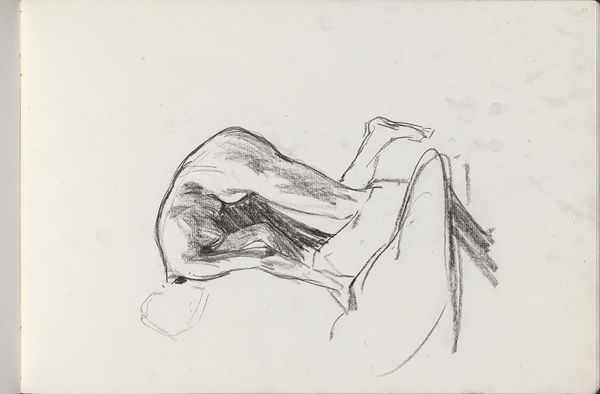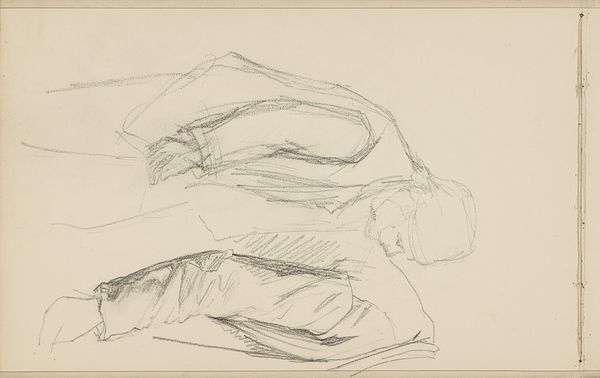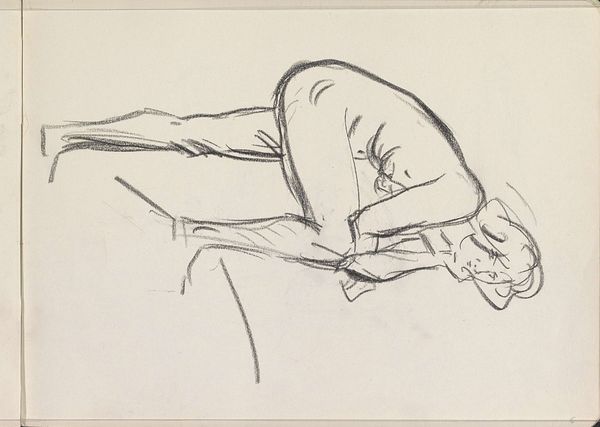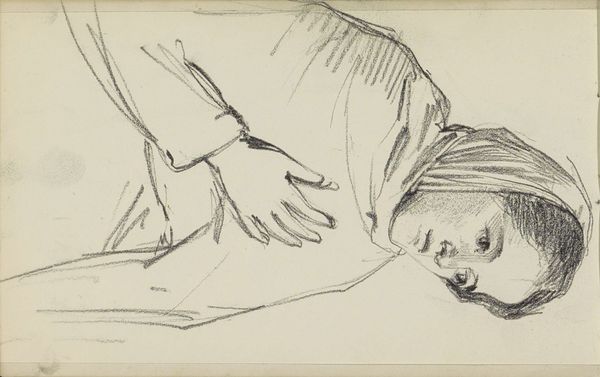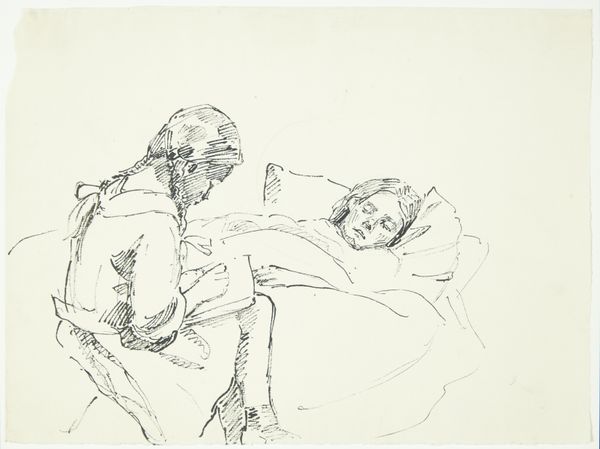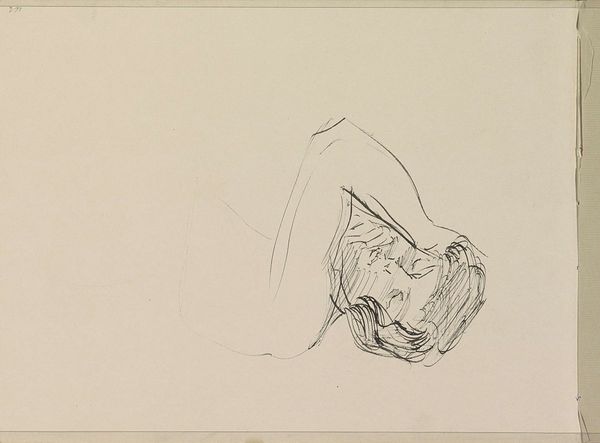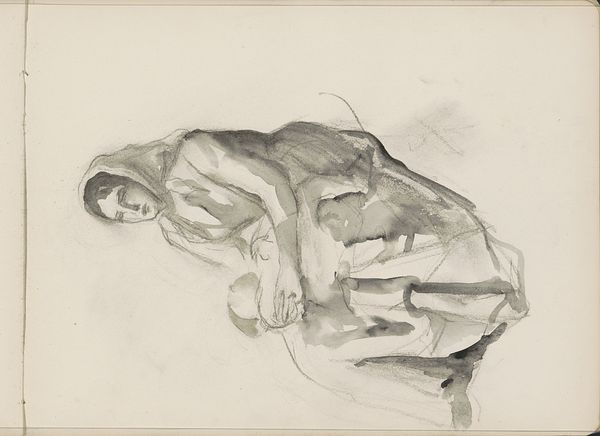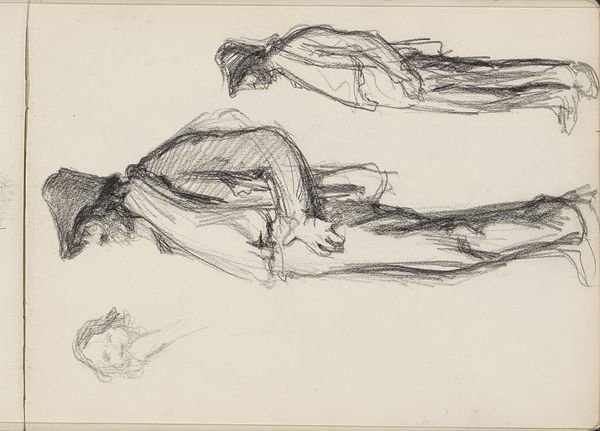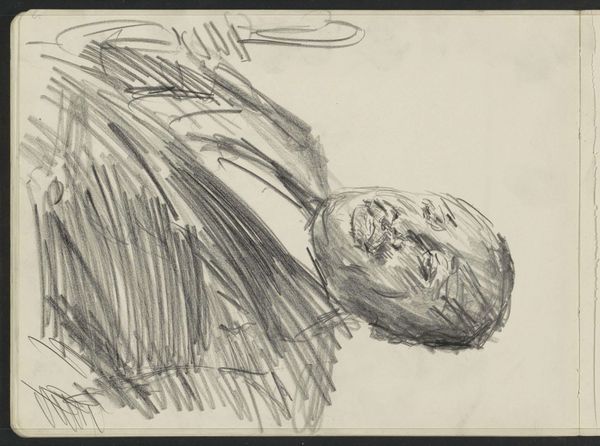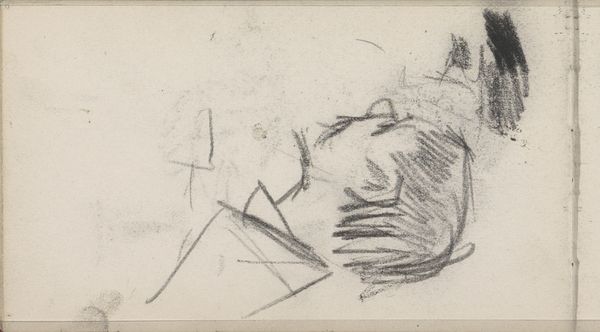
drawing, pencil
#
portrait
#
drawing
#
amateur sketch
#
toned paper
#
light pencil work
#
pencil sketch
#
figuration
#
personal sketchbook
#
ink drawing experimentation
#
pen-ink sketch
#
pencil
#
sketchbook drawing
#
pencil work
#
sketchbook art
#
realism
Copyright: Rijks Museum: Open Domain
Curator: Oh, there’s something inherently vulnerable in this image. Like catching someone unawares, lost in their own world. Editor: Precisely. We’re looking at “Zittende man met het hoofd rustend in de rechterhand"—"Seated man with his head resting in his right hand." It’s a pencil drawing held at the Rijksmuseum from sometime between 1865 and 1913, by Bramine Hubrecht. Notice how simple the means are. Curator: It's the kind of sketch you’d find tucked away in a forgotten sketchbook, capturing a fleeting moment. It makes me wonder, what was he thinking? Or, more accurately, what *wasn't* he thinking? We all have those moments where we just...empty. Editor: Well, let's consider the societal conditions influencing Hubrecht’s access to materials and the male figure as a laboring subject, caught at rest—probably temporarily rescued from external commodification in industrial production… Curator: Woah, hold on! Commodification? I’m seeing tenderness, exhaustion. I find it relatable in a very human way. The shading around his eyes suggests more than just physical weariness, like existential angst, maybe? Or just…Monday. Editor: I appreciate that we are aligned regarding the sense of 'rest' even though my interpretative context emerges directly out of the mode and means of its making—you can almost feel the softness of the pencil lead against the toned paper; a kind of luxury of time, paper and equipment, wouldn't you agree? Curator: You're right, there is something to be said about that very action, about this particular *kind* of attention. I'm struck by how immediacy creates this raw, unfiltered emotion on something like simple sketch paper. It bypasses any pretense or artifice. He is completely at ease and exposed—it's almost too real for idealist conventions! Editor: Which could explain its apparent placement as “amateur work," or its relegation inside of the "personal sketchbook” instead of the conventional fine-art categorization. So in many respects it reveals to us the conditions in which fine art is materially extracted, made, and valorized! Curator: See? We met in the middle after all—we started with individual emotional impact and discovered together the reality and conditions through which that encounter was brought into existence! Editor: Material conditions shaping perception—precisely where our responsibilities lie.
Comments
No comments
Be the first to comment and join the conversation on the ultimate creative platform.
